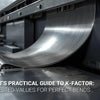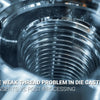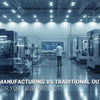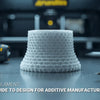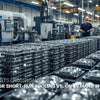How Can You Select Energy-Efficient CNC Machines to Cut Electricity Costs by 30%?
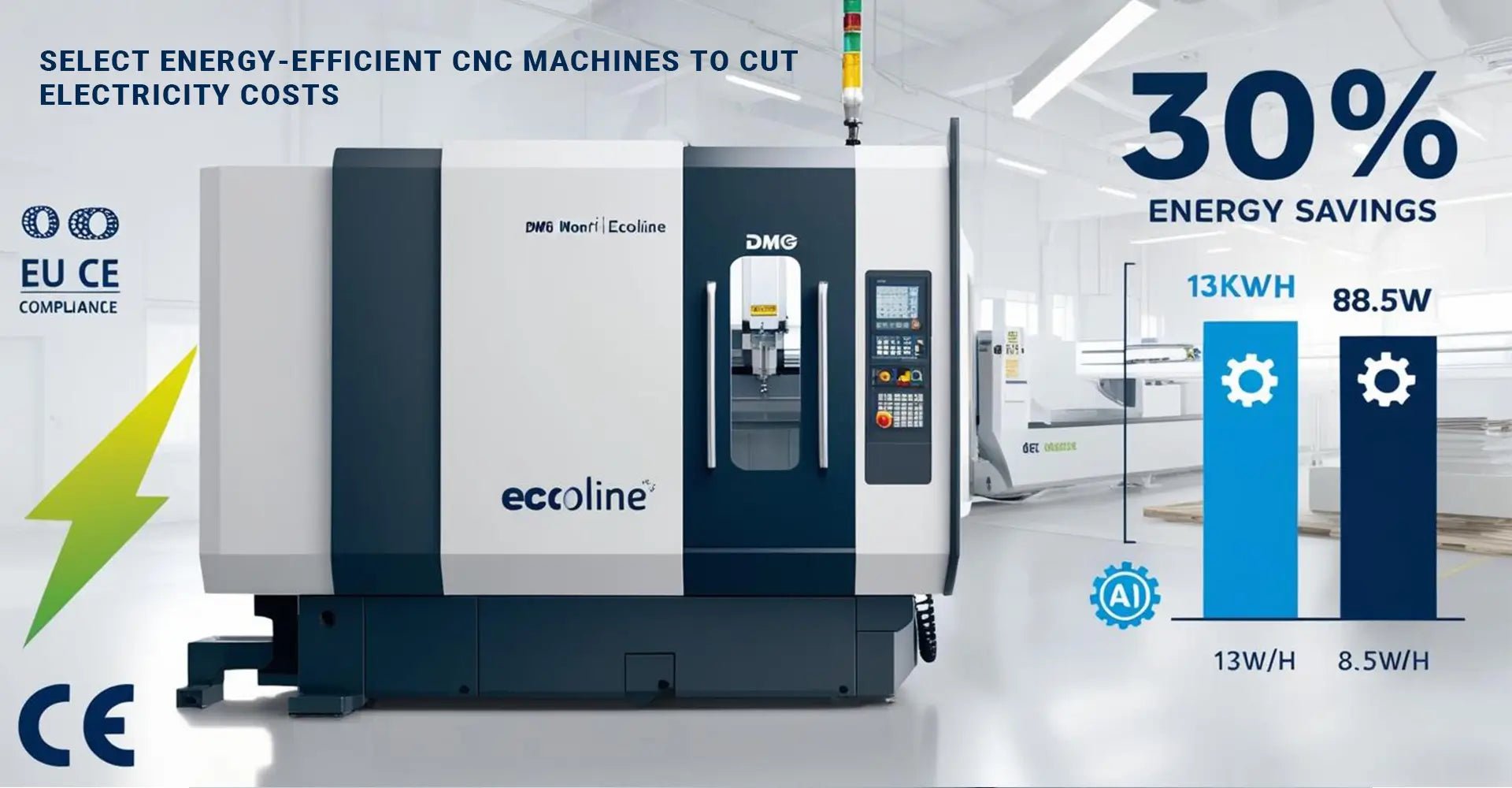
How Can You Select Energy-Efficient CNC Machines to Cut Electricity Costs by 30%?

In today's manufacturing landscape, energy costs represent a significant portion of operational expenses for CNC machining facilities. With electricity prices continuing to rise across Europe, selecting the right energy-efficient CNC machine has become a critical business decision rather than just an environmental consideration.
Are you struggling with high energy bills in your manufacturing facility? Our comprehensive Energy-efficient CNC machine selection guide reveals how EU CE-compliant CNC machines like the DMG MORI Ecoline series can reduce your electricity consumption by up to 30%, potentially saving mid-sized workshops €15,000+ annually.
Before diving into specific machine recommendations and energy-saving technologies, let's understand why energy efficiency matters now more than ever for CNC machine shops and how choosing the right equipment can dramatically impact your bottom line.
Table of Contents
- Why Does EU CE Compliance Matter for Your CNC Machine Selection?
- How Does the DMG MORI Ecoline Achieve 35% Energy Reduction?
- What Energy Metrics Matter When Comparing CNC Machines?
- How Much Can You Actually Save? A Real Automotive Supplier Case Study
- Conclusion
Why Does EU CE Compliance Matter for Your CNC Machine Selection?
EU CE compliance isn't just about regulatory adherence—it's increasingly tied to significant financial implications for manufacturing operations. The ERP Directive 2023 has established strict energy consumption standards for industrial equipment, with non-compliance resulting in substantial penalties.
Key benefit: EU CE-compliant CNC equipment not only helps you avoid potential fines but also qualifies your business for tax incentives worth up to €15,000 annually for mid-sized workshops. Additionally, many EU member states offer accelerated depreciation options for energy-efficient equipment.
The ERP Directive 2023 focuses specifically on machine tools energy consumption during cutting operations, standby modes, and auxiliary systems. ERP Directive 2023 compliant CNC machines must meet specific kW/hr benchmarks across operational states, with documentation verified during facility audits. Beyond avoiding penalties, CE-compliant machines typically deliver 25-35% lower energy bills compared to older models, creating a dual financial benefit for forward-thinking manufacturers.
How Does the DMG MORI Ecoline Achieve 35% Energy Reduction?
The DMG MORI Ecoline series represents a significant advancement in energy-efficient CNC technology, achieving an average 35% reduction in power consumption compared to conventional machines in the same class without compromising precision or output.
Three key technologies drive these impressive CNC machine power consumption reduction results: direct-drive spindles that eliminate energy-wasting transmission components, regenerative braking systems that capture and reuse energy during deceleration, and AI-powered shutdown protocols that minimize idle power consumption.
The direct-drive spindles alone deliver approximately 15% energy savings by eliminating mechanical losses in traditional belt-driven systems. Meanwhile, the regenerative braking technology captures deceleration energy—particularly valuable in high-cycle operations—and feeds it back into the system, reducing consumption by another 12-15%. Finally, the intelligent power management system analyzes workflow patterns and automatically optimizes shutdown timing during production gaps, contributing an additional 5-8% in energy savings without operator intervention.
What Energy Metrics Matter When Comparing CNC Machines?
When evaluating CNC machines for energy efficiency, looking beyond the manufacturer's marketing claims to specific, measurable metrics is essential for making accurate comparisons and calculating potential savings.
The most reliable metric is kW/hr consumption across different operational states. The DMG MORI Ecoline averages just 8.5kW/hr during 5-axis milling operations, compared to the industry average of 13kW/hr—a difference that translates to thousands in annual electricity cost reduction in CNC manufacturing for multi-shift operations.
Beyond basic power consumption, evaluating machines based on their energy efficiency ratio (EER)—output divided by energy input—provides a standardized comparison method. The Ecoline machines achieve an EER of 1.8 compared to the industry standard of 1.3. Additionally, standby power consumption represents a hidden cost in many operations; Ecoline's 0.8kW standby rate versus the typical 2.4kW can save significant energy during non-productive hours, especially for facilities running fewer than three shifts.
How Much Can You Actually Save? A Real Automotive Supplier Case Study?
Theory and specifications are valuable, but real-world results provide the most compelling evidence for energy-efficient CNC machine investments. A German automotive components supplier recently documented their experience after upgrading to DMG MORI Ecoline machines.
After replacing ten conventional CNC machines with Ecoline equivalents, this tier-one supplier recorded €42,000 in annual energy savings—achieving complete sustainable machining equipment ROI analysis in just 2.3 years through 35% lower power consumption across three-shift operations.
The supplier's detailed monitoring revealed that energy savings were actually higher than anticipated, particularly during complex 5-axis machining operations where the Ecoline's efficient spindle design showed its greatest advantage. Beyond direct electricity savings, the company reported reduced HVAC costs due to lower heat generation from the machines, adding approximately €4,800 in additional annual savings not initially factored into their ROI calculations. Maintenance costs also decreased by 15% due to the simpler direct-drive systems requiring fewer replacement parts.
Conclusion
Selecting energy-efficient CNC machines represents one of the most impactful decisions manufacturing operations can make to reduce operational costs while meeting increasingly stringent EU regulations. The implementation of ISO 50001 energy management for machining alongside efficient equipment delivers a comprehensive approach to energy reduction.
By focusing on key metrics like kW/hr consumption, standby power use, and comprehensive ROI calculations that include tax incentives, manufacturers can make informed decisions that benefit both their financial performance and environmental footprint. As EU regulations continue to evolve, investing in energy-efficient equipment becomes not just an option but a competitive necessity for forward-thinking machining operations.
External Links
[Energy-efficient CNC machine selection guide][^1]
[EU CE-compliant CNC equipment][^2]
[DMG MORI Ecoline energy savings][^3]
[ISO 50001 energy management for machining][^4]
[Sustainable machining equipment ROI analysis][^5]
---
[^1]: Explore this resource to learn how to choose CNC machines that save energy and reduce costs, enhancing your production efficiency.
[^2]: Understanding EU CE compliance is crucial for ensuring safety and regulatory adherence in CNC machinery, making this resource invaluable.
[^3]: Discover how DMG MORI Ecoline can significantly reduce energy consumption, leading to cost savings and a greener manufacturing process.
[^4]: Learn about ISO 50001 standards to improve energy efficiency in machining, leading to significant cost savings.
[^5]: Discover insights on the return on investment for sustainable machining solutions, crucial for long-term profitability.

